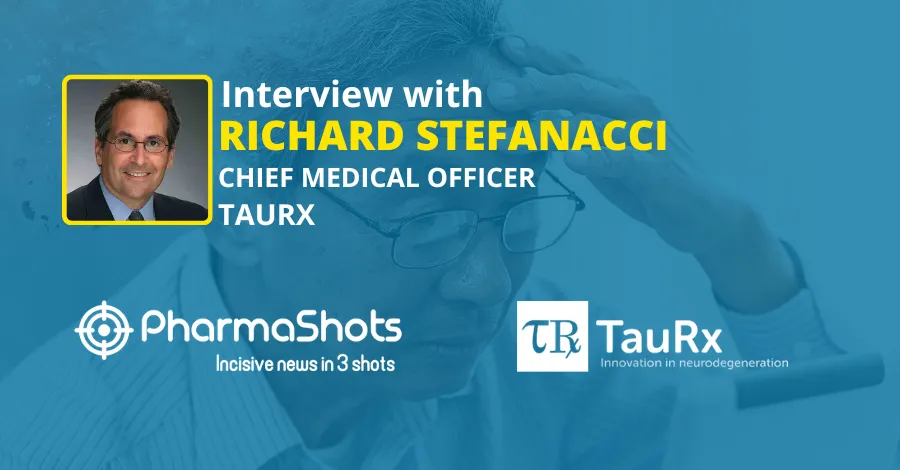
Craig Thompson, CEO of Cerevance Shares Insights from the Preclinical Data Presented at the Society for Neuroscience (SFN) 2022
Shots:
-
Craig shared with our readers the preclinical study results of C101248 demonstrating its pharmacological activity and validation of the NETSseq platform as an effective method to interpret new therapeutic targets for Alzheimer’s disease
-
He also elaborated on how the combination of the NETSseq platform and C101248 will help in the identification and development of novel therapeutics for neurodegenerative diseases
-
The interview gives a glance at how Cerevance is advancing its pipeline of targeted treatments for patients with neurodegenerative diseases, including Alzheimer’s disease and Parkinson’s disease
Smriti: Please brief our readers about your preclinical study results presented at the Society for Neuroscience Conference 2022.
Craig Thompson: At the Society for Neuroscience Conference (SfN), we presented novel data on the identification and pharmacological evaluation of C101248, a novel, potent and selective inhibitor of tandem pore halothane-inhibited potassium channel 1 (THIK-1), which acts as a modulator of neuroinflammation in neurodegenerative disease.
We identified THIK-1 as a novel drug target using our proprietary machine-learning-based deep sequencing platform, Nuclear Enriched Transcript Sort Sequencing (NETSseq). Our NETSseq dataset results indicated that THIK-1 expression was significantly increased in microglial cells found in the brain tissue of those diagnosed with Alzheimer’s disease (AD) and this correlation continued with disease progression. In-vitro thallium influx assays performed on cells expressing THIK-1 demonstrated concentration-dependent and selective inhibition of the channel when treated with C101248. Additionally, whole-cell patch clamp experiments demonstrated a rapid and sustained inhibition of THIK-1 constitutive current, further validating that the compound inhibits the protein’s function.
THIK-1 is only one component of the signaling pathway involved in the development of neuroinflammation. Treatment of human cells and primary mouse microglia with C101248 resulted in a reduction in IL-1β release dependent upon the NLRP3 inflammasome, key components of the neuroinflammatory pathway.
Overall, the results demonstrate the pharmacological activity of C101248 to inhibit inflammatory signaling and validate the NETSseq platform as an effective method to elucidate new therapeutic targets for neurological disease.
Smriti: Highlight the characteristics of your proprietary NETSseq platform and how it contributed to the identification of a new target THIK-1 for Alzheimer’s disease.
Craig Thompson: The NETSseq platform enables us to elucidate novel drug targets directly from diseased human brain tissue. We work with 24 global brain bank partners to assemble a brain tissue collection integral to our drug discovery efforts. The generous donation of samples is the foundation of the platform. These post-mortem human samples are isolated from healthy and diseased tissue across brain regions, donor ages, and disease states. We use antibodies and RNA probes to sort and isolate neuronal and glial cell types allowing comprehensive profiling of the specific brain cell types across the brain. NETSseq allows us to identify and quantify many different cell subtypes and using RNAseq, measure the expression of a greater number of genes expressed at much lower levels versus other techniques. These data create a molecular signature of the human brain and neurodegenerative disease states and when compared to healthy donor tissue, elucidate potential novel therapeutic targets.
Using this technique, our data revealed that expression of THIK-1 was specific from microglia and significantly increased in microglial cells isolated from donor tissue of those diagnosed with AD.
Smriti: Elaborate on the role of Cerevance’s novel inhibitor, C101248 in the treatment of Alzheimer’s disease.
Craig Thompson: Patients are in need of novel approaches to slow the progression of diseases like AD, where current therapies only treat the symptoms and only a portion of the patient population see significant benefit. Neuroinflammation is a hallmark of neurological disorders and chronic neuroinflammation is found in most neurodegenerative diseases. Our positive preclinical results demonstrate that C101248 is a potent and selective inhibitor of THIK-1 that disrupts neuroinflammatory signaling with the potential to slow disease progression and represents a promising new avenue of therapeutic intervention for AD.
Smriti: How will the combination of your NETSseq platform and C101248 inhibitor contribute to the development of an effective treatment method for Alzheimer’s? How will this method be better than already available treatments in the market?
Craig Thompson: Our NETSseq platform and C101248 represent the power of our proprietary technology and approach to drug discovery to identify and develop novel therapeutics for neurodegenerative diseases. By identifying variations in gene expression across regions of the human brain and in various cell types in diseased tissue and comparing back to healthy tissue, we can unearth novel targets that may play a role in the development of disease. Small molecules, like C101248, can be developed to interfere with the function of these targets and confirm the validity of the new target’s role in disease.
While C101248 is in the early stages of development, we are excited to see the results of future studies and better understand its potential to attenuate neuroinflammation, a central process involved in neurodegenerative diseases.
Smriti: In addition to SfN, has Cerevance presented any other study results at Neurology related events? Discuss, if any.
Craig Thompson: We recently presented similar findings related to THIK-1 and C101248 at the Cold Spring Harbor Laboratory (CSHL) Neurodegenerative Disease: Biology and Therapeutics meeting and published complete findings in the peer-reviewed journal Neuropharmacology.
Smriti: Lastly, is Cerevance exploring or planning to explore the potential of the NETSseq platform to treat other neurological indications?
Craig Thompson: Our pipeline includes a Phase 2b/3 clinical candidate (CVN424) in Parkinson’s disease, a Phase 1 candidate (CVN766) in psychiatric disorders and additional pre-clinical stage molecules utilizing novel mechanisms of action to treat Parkinson’s and Alzheimer’s diseases.
Source: Canva
About the Author:

Craig Thompson is the CEO of Cerevance with over 25 years of experience in biotech and the pharmaceutical industry. He has experience at Merck, Pfizer, and several biotech companies including Trius. Prior to joining Cerevance, he was President and CEO of Neurana Pharmaceuticals. He earned his bachelor’s degree from McMaster University, Ontario, Canada, and master’s from the University of Notre Dame - Mendoza College of Business, Notre Dame, Indiana.
Tags

Senior Editor at PharmaShots. She is curious and very passionate about recent updates and developments in the life sciences industry. She covers Biopharma, MedTech, and Digital health segments along with different reports at PharmaShots.













